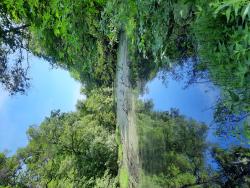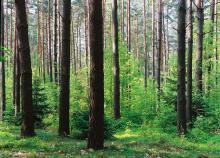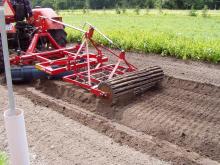 Asset Publisher
Asset Publisher
HISTORY
 Mostek, fot. Katarzyna Miechowicz
Mostek, fot. Katarzyna Miechowicz
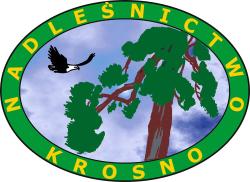 Historia, fot. Archiwum Nadleśnictwa Krosno
Historia, fot. Archiwum Nadleśnictwa Krosno
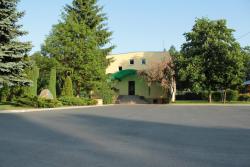 Nadleśnictwo Krosno fot. Katarzyna Miechowicz
Nadleśnictwo Krosno fot. Katarzyna Miechowicz
The area of the Forest District makes central part of the historic Ziemia Krośnieńska (Krosno Land) including the town and the nearest areas located west and north of it.
During the period of the formation of early - Piast country, reinforced tribal borough became an important borderline guardhouse on the western external borders of Poland. The borough faced German invasions on Poland during rules of Henry I the Bearded (1202 – 1238). In those days, Krosno again became weighty strategic point and administration and economic centre. Henry I the Bearded reformed Krosno spatially and awarded the Magdeburg rights, he also contributed to rural colonization development, which during his rules took the form of close settlements rationally arranged. In the middle of the XIII century, there came into being the Duchy of Głogów, which includes the land of Krosno Castellany as well . It bordered then with Brandenburg estates. As Magdeburg was a part of Brandenburg those days, Lubusz Land was sold by Bolesław II the Rogatka to Brandenburg in 1249.
In 1319 the above mentioned area came back to the Dutchy, and next ruling over Krosno Dukes were successively Głogów and Żagań Henries IV, V, VI, VIII, IX and XI. The Dukes resided in Żagań or in Kożuchów. Henry XI was married to the daughter of the last Elector of Brandenburg, Barbara. After his death, Krosno became the widow's place of residence under Brandenburg control. The close relative of dead Henry XI – Jan II the Mad (former Duke of Żagań) couldn't reconcile to such situation, as he had been fighting with Brandenburg about recovery of his heritage for six years ( in the years 1476 – 1482). Upon the decision of peace in Kamieniec, Krosno remained under rules of Brandenburg. However from newly conquered lands, which included also Sulechów and Lubusz Districts, there was established the new Dutchy of Krosno. In 1518, there took place the personal union between Brandenburg and Royal Prussia, and in the first half of XVIII century Brandenburg became the province of the Kingdom of Prussia. After the war with Austria and joining Silesia to Prussia in 1740, there carried out the reform, thus dividing the country into districts. There was formed Krosno District covering the western part of former Castellany and some part of Lubusz District. Such division lasted till 1945.
 Asset Publisher
Asset Publisher
Historia pisana pomnikami przyrody
Historia pisana pomnikami przyrody
Historia pisana pomnikami przyrody
Na terenie leśnictwa Skórzyn (gm. Maszewo) znajduje się 9 pomników przyrody. Są nimi dęby szypułkowe- 4 szt., wiązy pospolite- 2 szt., jesion wyniosły- 1 szt., buki zwyczajne- 2 szt. Jeden z najciekawszych dębów znajduje się w oddziale 120-x w obrębie stawów hodowlanych niedaleko miejscowości Czetowice. Pozostałe znajdują się w pobliżu historycznego miejsca w Skórzynie, tj. w starym parku okalającym niegdyś pałac. Pałac ten był siedzibą szlachecką. Pierwsze wzmianki o miejscowości pochodzą z roku 1308. Kolejnymi właścicielami miejscowości i pałacu były rodziny von Dohna, von Grunberg, von Schwanbach, hrabia Finck von Finckenstein, Lechmann, Harttung, Schierstadt. Ostatnie pięć lat swojego życia spędził w Skórzynie kanclerz Rzeszy Georg Leo hrabia von Caprivi de Caprere de Montecuccoli, który zmarł w Skórzynie w dniu 06 lutego 1899 roku i tu został pochowany. Pałac ten wybudowano na planie prostokąta w otoczeniu wody. Pozostałości pałacowego stawu istnieją do dnia dzisiejszego. Na terenie przypałacowego parku znaleźć można osiem z dziewięciu pomników znajdujących się na terenie leśnictwa Skórzyn. Wiek drzew pomnikowych szacowany jest na około 250- 260 lat, a więc są one świadkami zarówno wznoszenia jak i upadku pałacowych budowli. Do parku tego powoli wkracza natura czego wyrazem jest coraz większa ilość gatunków ekspansyjnych takich jak leszczyna pospolita czy grab zwyczajny. Drzewa martwe, które przegrały odwieczną walkę życia ze śmiercią zasiedlane są przez liczne owady, grzyby saprotroficzne i inne organizmy żywiące się martwym drewnem. Stanowią one również miejsce schronienia dla wielu zwierząt.






